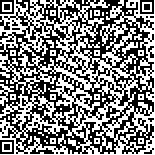| 摘要: |
| [摘要] 目的 探讨微创筋膜闭合器在小儿胸腔镜膈肌手术中的应用价值。方法 回顾性分析2019年1月至2022年11月福建医科大学附属漳州市医院收治的膈疝7例、膈膨升1例患儿的临床资料。胸腔镜下应用微创筋膜闭合器辅助对患儿行膈疝修补术和膈肌折叠术。结果 手术过程顺利,术后均放置胸腔引流管。4例新生儿术后需呼吸机辅助,其中3例呼吸机撤机时间为术后第2、4、5天;1例合并染色体异常,术后第3天拔胸腔引流管及气管插管后出现反复气胸并气喘,予重新置管,术后第21天发生肺出血,术后第24天家属要求自动出院。除自动出院1例外,其余7例拔胸腔引流管时间为术后第2~11天,平均4.4 d,其中2例术后拔胸腔引流管时间>7 d(分别为9、11 d);术后住院时间为8~17 d,平均11.8 d。出院前复查胸部X线片未见异常。术后随访6~12个月,复查胸片均未见复发。结论 胸腔镜下应用微创筋膜闭合器辅助对患儿行膈疝修补术和膈肌折叠术安全有效。 |
| 关键词: 微创筋膜闭合器 膈肌 小儿胸腔镜 |
| DOI:10.3969/j.issn.1674-3806.2024.01.16 |
| 分类号: |
| 基金项目:福建医科大学附属漳州市医院小儿外科,漳州 363000 |
|
| Application value of minimally invasive fascial closure device in pediatric thoracoscopic diaphragm surgery |
|
JIAN Ziwei, WANG Bingjie, CHEN Wenyou, CHEN Jinrong
|
|
Department of Pediatric Surgery, Zhangzhou Affiliated Hospital of Fujian Medical University, Zhangzhou 363000, China
|
| Abstract: |
| [Abstract] Objective To explore the application value of minimally invasive fascial closure device in pediatric thoracoscopic diaphragm surgery. Methods The clinical data of 7 cases of diaphragmatic hernia and 1 case of diaphragmatic distension who were admitted to Zhangzhou Affiliated Hospital of Fujian Medical University from January 2019 to November 2022 were retrospectively analyzed. A minimally invasive fascial closure device was used to assist the patients with diaphragmatic hernia repair or diaphragmatic folding under thoracoscope. Results The surgical process went smoothly, and all the patients were placed with thoracic drainage tube after surgery. Four cases of neonates needed to be assisted by ventilators after surgery, and 3 cases of the four neonates had their ventilators removed on the 2nd, 4th and 5th day after surgery, and 1 case of the four neonates with chromosomal abnormalities developed recurrent pneumothorax and wheezing on the third day after removal of the thoracic drainage tube and tracheal intubation. The tubes were re-inserted, and pulmonary hemorrhage occurred on the 21st day after surgery. On the 24th day after surgery, the patient was voluntarily discharged at the request of the patient′s family members. Except for 1 case who was discharged voluntarily, the other 7 cases had their thoracic drainage tubes removed from 2 days to 11 days after surgery, with an average of 4.4 days. Among the 7 cases, 2 cases had their thoracic drainage tubes removed more than 7 days(9 and 11 days, respectively). The length of postoperative hospitalization was 8-17 days, with an average of 11.8 days. Chest X-rays were re-examined before discharge, and abnormal results were not found. The patients were followed up for 6-12 months after surgery, and no recurrence was observed on the re-examined chest X-rays. Conclusion It is safe and effective to use minimally invasive fascial closure device assisted under thoracoscope to repair diaphragmatic hernia or diaphragmatic folding in pediatric patients. |
| Key words: Minimally invasive fascial closure device Diaphragm Pediatric thoracoscope |

